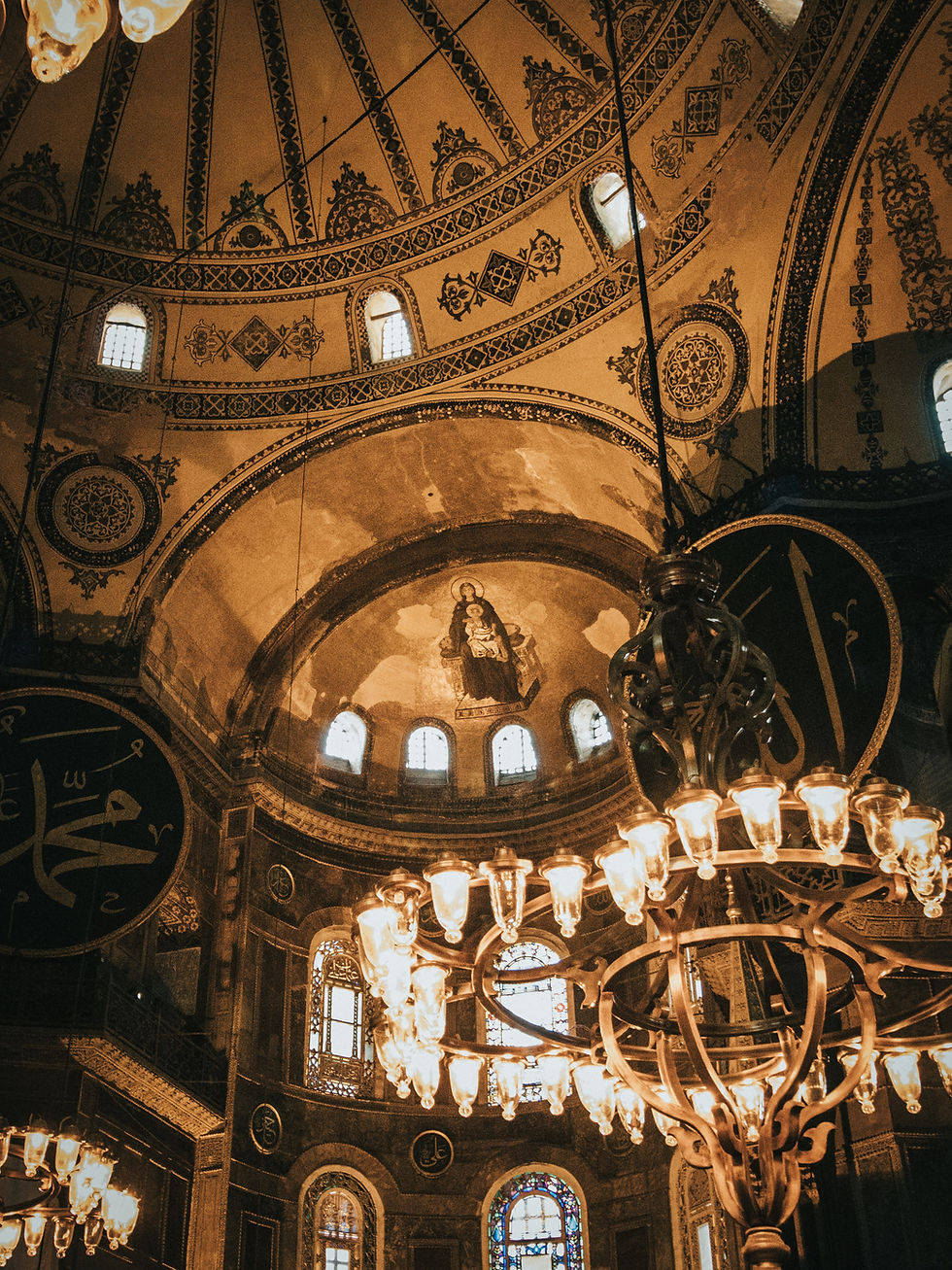Istanbul: Capital of Three Empires
- Davut Kaya
- Dec 16, 2024
- 4 min read
The findings unearthed in the archaeological excavations carried out in Yenikapı have revealed that the history of Istanbul dates back 8,500 years. Since its establishment, Istanbul has developed under the sovereignty of many states throughout history and has been the center of various cultures. Undoubtedly, the most striking feature of Istanbul's history is that it has served as the capital of three universal empires: the Roman, Byzantine and Ottoman Empires.
In the 4th century AD, the Roman Empire expanded greatly; due to its strategic location, Istanbul was chosen as the new capital instead of Rome by Emperor Constantine the Great. The city was reorganized over a period of more than 6 years, the walls were expanded, temples, official buildings, palaces, baths and a hippodrome were built.
In 330, it was officially announced that Istanbul was the capital of the Roman Empire with great ceremonies. The city, which was known as the Second Rome and New Rome during the beginning of the Modern Age, was later called "Byzantion" and Constantinople in the later periods. The city's name has been known as "Polis" among the public throughout history. It is understood that the emperors after Constantine the Great continued their efforts to beautify the city. The first churches in the city were also built after Constantine.
Due to the collapse of the Western Roman Empire in the 5th century, Istanbul was the capital of the Eastern Roman Empire (Byzantium) for many years. The city, which was rebuilt during the Byzantine period, was expanded again with walls. The magnificent city walls, which are 6492 meters long today, were built by Emperor Theodosius II. In the 6th century, the city, whose population exceeded half a million, experienced another golden age under the rule of Emperor Justinian. The Hagia Sophia, which has survived to this day, is a work of this period. The Latin rule, which was a dark period between 726-842, began with the invasion of the city by the Crusader Armies of the Fourth Crusade in 1204, and the city was plundered for years, including all churches, monasteries and monuments. The city, whose administration was taken over by the Byzantines again in 1261, never regained its former wealth.[1] Istanbul was the capital of the Ottoman Empire for 470 years after its conquest by Fatih Sultan Mehmet in 1453 until 1923. Istanbul, which became the center of science, culture and art during the Ottoman period, gained a magnificent tolerance where mosques, synagogues and churches lived side by side. Fatih Sultan Mehmet's large-sized cannons, used for the first time in the history of world wars, were an important reason for the breaching of the walls of Istanbul. After the conquest, the capital of the Ottoman Empire was moved here, the city population was increased with immigrants brought from various parts of the country and construction works were started in the empty and ruined city. The old people of the city were granted freedom of religion and social rights, and they were allowed to continue their lives. A hundred years after the conquest, Turkish art left its mark on the city, and domes and minarets dominated the city silhouette. Istanbul, which was first annexed to the Ottoman Empire on May 29, 1453, was divided into four administrative units, each with a different demographic structure in 1459. Istanbul, which entered the 16th century as one of the most important and largest cities in history, suffered great damage in the earthquake of September 14, 1509, known as the Little Apocalypse. After this great destruction, Istanbul was virtually re-established by Sultan II. Beyazıt with the employment of 80 thousand people and continued to increase its importance in history. Istanbul, which acquired many valuable works between 1520-1566 under the rule of Suleiman the Magnificent, has a city plan that extends to the present day and has continued its development. Istanbul, which became the center of the entire Islamic world due to the Ottoman sultans becoming Caliphs from the 16th century onwards, became the “World Capital” by hosting not only the Islamic world but also all religions and cultures. During the Tulip Era, during the reign of Nevşehirli Damat İbrahim Paşa between 1718-1730, winds of change began to blow in Istanbul with the establishment of the fire department, the opening of the first printing house and the establishment of various factories. With the declaration of the First Constitutional Era on December 23, 1876 and the declaration of the Second Constitutional Era on July 24, 1908, the Ottoman Empire changed shape. As a result of this change, the first Province was established in Istanbul with a law dated 1909. A new era began in Istanbul with the Tanzimat Edict, which was read and announced to the public in the Gülhane Garden of Topkapı Palace on November 3, 1839. Following World War I, Istanbul was occupied by the Allied Powers navy on November 13, 1918. Istanbul, which was liberated from enemy occupation on October 6, 1923, ended its period as the capital city with the establishment of the Republic of Turkey on October 29, 1923. The transfer of the capital of the Republic of Turkey to Ankara did not change the importance of Istanbul, and the city, which has hosted different civilizations for centuries, has survived to the present day without losing its historical and cultural importance.
star_border




Comments